Browse Houses
Search Results: Returned 5516 records. Displaying results 4001 – 4100
| House name | Description | |
|---|---|---|
| Moyglass | Lewis records Moyglass as the seat of J. Burke in 1837. It was occupied by Andrew O'Hare at the time of Griffith's Valuation. In 1906 it was the property of the representatives of James Haig and was valued at £8. Buildings are still extant at the site. | |
| Moyle Moss | Henry Thompson was leasing this property from John S. Law at the time of Griffiths Valuation in the 1850s, when it was valued at £11. Labelled Moyle Moss on all editions of Ordnance Survey. The National Inventory of Architectural Heritage suggests the house at the site now is not the original but outbuildings date from the mid 19th century. |
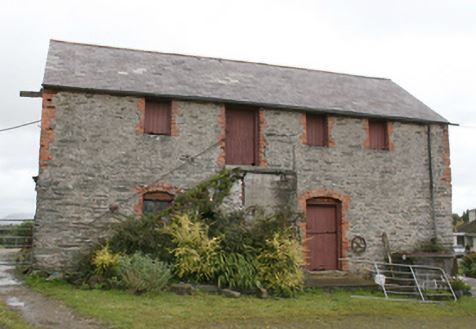
|
| Moyles Mill House | A house built in front of the corn mill after the first Ordnance Survey took place in the early 1830s as it is not marked on the first 6 inch map. It was occupied circa 1860 by Thomas Lennan, who held the property valued at £20, from Joseph Plunkett. In 1901 occupied by Thomas McKenna, a miller and farmer, and in 1911 by the Murphy family. The house is no longer extant. | |
| Moylish | The Ordnance Survey Name Book shows Arthur Gloster as proprietor of this townland circa 1840 and Moylish House is marked on the first Ordnance Survey map. By the time of Griffith's Valuation Moylish valued at £24 was occupied by Lawrence Kelly who held the property from John Judde. Moylish is now the site of the Limerick Institute of Technology. | |
| Moyloughmore | The O'Rorkes lived in the rectory at Moylough. At the time of Griffith's Valuation, Reverend John O'Rorke was leasing a property valued at £11 from Charles O'Rorke. The rectory is still extant. |

|
| Moylurg House | In 1837 Lewis records Moylurg house as the seat of the Dick family. Rev. William Robertson was leasing a property valued at £25 to John Johnston, at Clogher, parish of Eastersnow, at the time of Griffith's Valuation. This appears to be Moylurg House which is still extant. Moylurg was the home of Major Henry Taaffe Ferrall in the 1870s. |

|
| Moymore | This house was occupied by a member of the Stackpoole family in 1837. The townland was held by James R. Dunne in the mid 19th century and the house occupied by John B. McNamara. By the mid 1870s Mrs Mary Louisa Ryding was resident at Moymore. Her daughter Louisa married Thomas Kenny and in 1906 Moymore belonged to Thomas H. Kenny. A house is still extant at the site. | |
| Moyne | Built in the first half of the 19th century by Michael J. Browne who was forced to sell his estate in the mid 1850s when the house was described as ‘a magnificent pile of Grecian architecture of the Doric order’. John Stratford Kirwan bought the house and demesne in 1857 from Edward Browne who had purchased it in 1855. Kirwan advertised it for sale again in 1865. It was eventually sold to the Waithmans who later purchased Merlin Park. In 1912 the house became a hospice for infirm priests and in the 1930s was taken over by the Sacred Heart Missionaries. Since 1972 it has been the home of a number of people, including the broadcaster and poet George MacBeth and the singer Donovan. A floor plan and lithographs of the house are included in the various sale rentals. |

|
| Moyne Abbey | Associated with the Lindsey family in the 17th century it was leased to the Knoxes by James O'Hara, Lord Tyrawley, for 999 years in 1741. The Knoxes built a private residence on to the east end of the friary. At various time the Jones, Palmer and Kirkwood families leased parts of Moyne. Thomas Jones sold his interest in the Landed Estates' Court in 1867. The Ordnance Survey Name Books record that Peter Nolan, agent to Sir William Palmer, lived in a neat cottage in the east of the townland. This may be the property labelled Moyne House on the 25-inch Ordnance Survey map of the 1890s (G228287), the remains of which are still extant. | |
| Moyne Hill | Hughes writes that a Captain Carter bought Moyne Hill in 1852 from Charles Blake of Merlin Park. By 1906 James McDonnell was occupying the house. Soon afterwards it became the home of Thomas McDonagh of Headford Castle and his descendants still live there. The original house was knocked down circa 1950 and replaced by a modern bungalow. The original entrance gates and farm buildings are extant. |

|
| Moyne Lodge | Moyne Lodge was occupied by the Golding family in the early part of the 19th century and by Martin Kirwan Blake before the sale in 1852. The house is no longer extant but some stone walls are still evident with the old castle to the right. |

|
| Moynehall House | ||
| Moynehall House | Moynehall was originally the home of the Moores. In 1847 Moynehall, the house and 12 acres, was been offered for lease by the Court of Chancery in the matter of Catherine Bell, a minor and heiress in law of Robert Bell, a lunatic, dated 15 February 1847 (Anglo-Celt). Griffith’s Valuation records the house as vacant and the Reverend Anthony Adams as the immediate lessor. Moynehall, the property of the Reverend Anthony Adams, was advertised for sale in the Encumbered Estates Court on 28 May 1857. In 1876, Moynehall belonged to John Fay. It is still extant. | |
| Moynoe | In the early 18th century the Ringrose family lived at Moynoe. It is probable that Sir John Reade built the late 18th century house. He was the occupier in 1814 and Fitzgibbon Hinchy was living in the house in 1837. The house was unoccupied at the time of Griffith's Valuation, Thomas Wadson was the immediate lessor. The Sampson family lived in it for the remainder of the 19th century and well into the 20th century. Edward MacLysaght surveyed the papers of Miss Mary Sampson of Moynoe circa 1944. Bought by the present owners in the mid 20th century, the house was demolished in 1998. see http://www.esatclear.ie/~moynoe/Page_16x.htm/ |
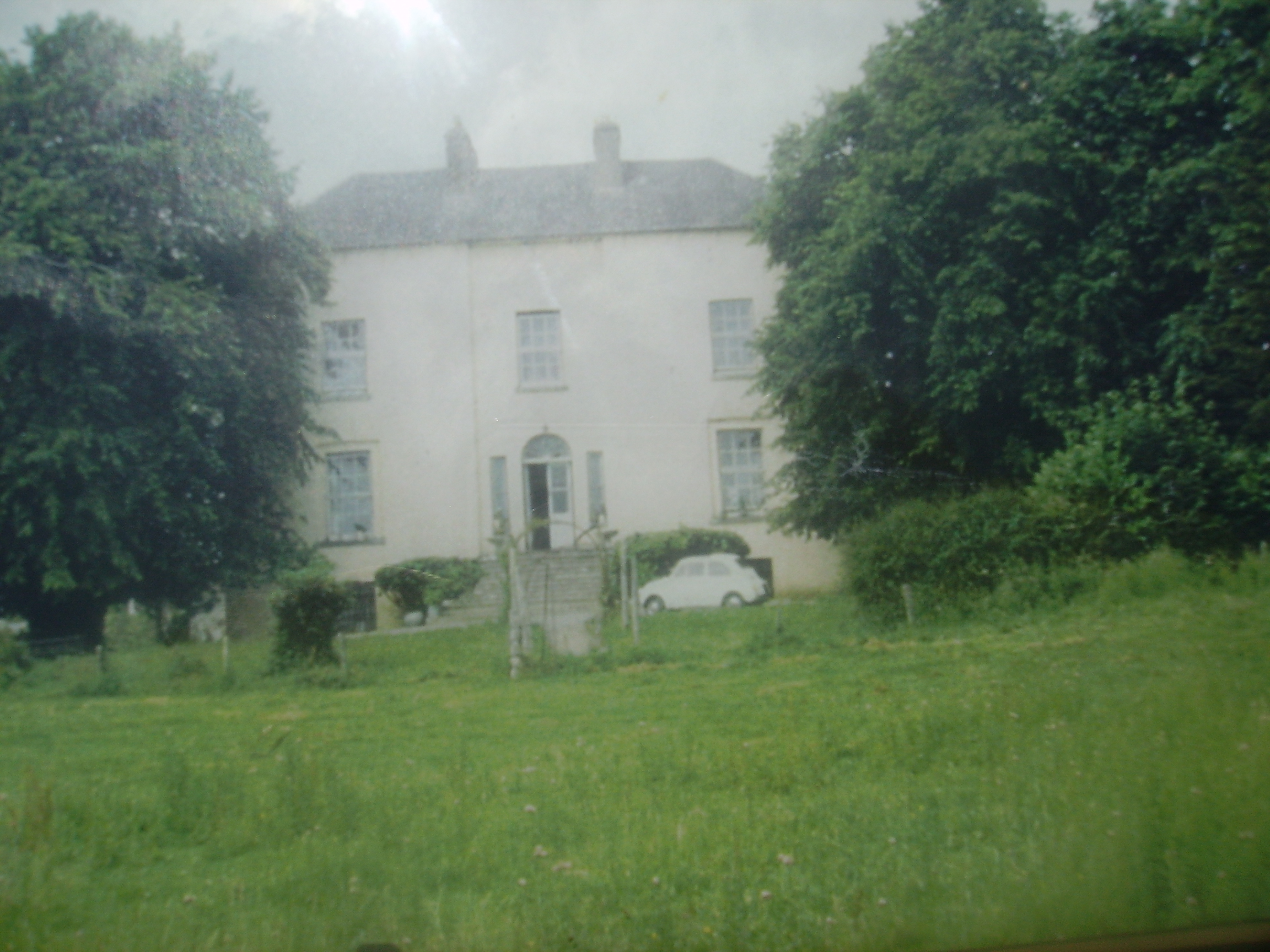
|
| Moyode | The seat of the Persse estate for many years. At the time of Griffith's Valuation it was the seat of Burton Persse. In 1894 Slater refers to it as the seat of De Brugh Persse. In 1906 it was owned by Lord Ardilaun and was valued at almost £73.Only some ruins of Moyode Castle remain although elements of the stable yard still exist. |

|
| Moyour | This property was held in fee by Martha McDonnell at the time of Griffith's Valuation, when it was valued at almost £5. Described in the sale advertisement of 1870 as a 'commodious thatched house'. It is labelled as "in ruins" on the 25-inch Ordnance Survey map of the 1890s. | |
| Moyriesk | Lewis writes that the finely wooded property of Lord Fitzgerald and Vesey was bought by his father from the Macnamaras. Occupied by George Sampson at the time of Griffith's Valuation, when it was valued at £35. Moyriesk was accidently burnt in 1875 though Slater still notes it as a property owned by them in 1894. |

|
| Moyroe | Moyroe was the home of Samuel Laurence in 1814 and of Malachy Ryan in the mid 19th century. Malachy Ryan held the townland of 51 acres in fee and the buildings were valued at £10.10 shillings. A building still exists at this site. | |
| Moytura | Built in 1865 as a home of Sir William Wilde, father of Oscar Wilde. Still extant and well maintained. | |
| Moyvane Farm | At the time of Griffith's Valuation, William Sandes was leasing a property to Stephen Sandes at Moyvane North, valued at £3 5s, on a holdings of 150 acres. It is described as a farmhouse. | |
| Moyvane House | William L. Vesey-Fitzgerald Foster was leasing this property from the TCD estate at the time of Griffith's Valuation, when it was valued at £3 15s. In 1837 Lewis mentions the principal residence in Murher parish as the property of Baron Fitzgerald but occupied by Mr. Enright. In 1814, Leet refers to it as the residence of John Sandes. Bary notes that it was earlier associated with the Sandes family. It is no longer extant. | |
| Moyvannan Castle | 16th century tower house with late 19th century extension. In the sale rental of the Domvile estate 1865 it is described as a handsome and commodious residence. In 1986 Moyvannan was restored by Don Panoz, Chairman of the Elan Corporation. |

|
| Moyveedy | A house on the Devon estate valued at £10 and occupied by Thomas Fitzgerald in the early 1850s. The house is still extant and part of a large farm. |

|
| Moyveela Lodge | The original Moyveela Castle was the home of the Browne family before their move to Mount Hazel. In 1786, Wilson writes that Moyveela was the seat of Andrew Browne. At the time of Griffith's Valuation a large portion of the townland was part of the Vandeleur estate and was leased to James Kineen. He occupied a property which later became known as Moyveela Lodge which is still extant. Over 300 acres as well as two caretakers' houses were in the possession of Andrew Browne whose address in the 1870s is still given as Moyveela and Mount Hazel. | |
| Moyview | Moyview was part of the Wingfield estate but was let to other families at different times. At the time of Griffith's Valuation, it was being leased by Robert Warren and was valued at £12. There is still an occupied house at this site though McTernan notes that the original house was an eighteent-century single story thatched residence. | |
| Muckelty | Lewis records Muckelty as the seat of Jones Irwin in 1837. At the time of Griffith's Valuation, Napper Irwin was leasing a property at Muckelty, barony of Leyny, from Henry Irwin. It was valued at almost £3. Farm buildings exist at the site now. | |
| Muckloon | In 1786 Wilson mentions "Muckland" as the seat of Mr. Kelly. Occupied in the mid 1850s by Richard P. Lloyd to whom most of the Kelly estate was let. The house was then valued at £20. It is no longer extant. | |
| Muckridge House | The Hobson family were resident at Muckridge from at least the mid 1770s. Wilson, writing in 1786, refers to it as the seat of Mr. Hobson. In 1814 Richard Fitzgerald is recorded as resident at Muckridge and in 1837 William Fitzgerald. At the time of Griffith's Valuation Samuel Le Hunte Hobson held the property in fee and the buildings were valued at £37. Still extant, well maintained and for sale at the beginning of 2010. |
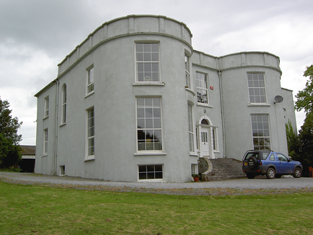
|
| Muckross Hotel | William Roche was leasing a property valued at £30 from the Herbert estate at the time of Griffith’s Valuation. The building marked as hotel on the 1st edition 6” map is recorded on the 1894 map as Muckross Hotel. Roche was leasing an adjoining building, valued at £13, from Daniel Clifford in the same vicinity. Horgan states that the Tourist’s Illustrated Handbook for Ireland, 1853, refers to Mr. Roche as manager of the Muckross Hotel. The property is still a hotel, now known as the Muckross Park Hotel. Daniel O’Sullivan was leasing a property in the same area from the Herbert estate, valued at £12 12s. In 1906 Lord Ardilaun owned the property at Dromyrourk valued at £20. |

|
| Muckross House (Muckross Abbey) | McCoole states that the Herberts had a house on the Muckross peninsula since at least the early 18th century, on lands leased from the MacCarthaigh Mor family. A new house was constructed in the 1770s. In 1837 Lewis described Muckross as "situated in a demesne of enchanting beauty". The present Muckross House, was built between 1839-43. At the time of Griffith’s valuation it was valued at £129. It continued to be owned by the Herbert family until the 1890s, when, the family fortunes having declined, it was sold by the Standard Life Assurance Company, and purchased by Lord Ardilaun. He was the owner in 1906 when it was valued at £130. In 1910 it was sold to an American family, Bowers Bourn who in turn gave it to their daughter and son-in-law, Maud and Arthur Vincent. It was presented to the nation in 1932 and now forms the centre of the Killarney National Park. |

|
| Muckruss House | Henry B. Beamish was occupying Muckruss House at the time of Griffith's Valuation when it seems to have been jointly owned by him and Thomas Hungerford. It was valued at £14 10s at the time. In 1906 it was owned by William Beamish and valued at £12 10s. It is still extant. A later house, known as Dunmore House (W397379), appears on the 1890s 25-inch Ordnance Survey Map. There is a hotel and golf course in this area now. | |
| Mulkear | Built by the Reverend J. Crampton in 1812 at a cost of £3,000. He was still resident in 1837. Occupied by George Gough in the early 1850s, held by him from John Tuthill and valued at £35. Later the home of Samuel Frederick Dickson. Home of Martin Edward Patrick White circa 1900. On the 25-inch edition Ordnance Survey map the house at this site is labelled Woodstown House. An earlier Woodstown House is described as "in ruins" in the adjoining townland of Woodstown on the 1st edition Ordnance Survey Map. In 1786 Wilson refers to a house at "Gran" as the seat of Mr.Gough, which may refer to an earlier house in this area. This property is now part of a health services facility. | |
| Mullagh or Rock Hill House | William R. Meade was leasing this property to Thomas R. Leane at the time of Griffith's Valuation, when it was valued at £8 10s. It is labelled as Rock Hill House on the 6-inch Ordnance Survey map but appears on the 25-inch map of the 1890s as Mullagh House. A possibly later house and large farm occupy the site now. | |
| Mullaghawny | Charles 'Sturgeon' (Strogen) was resident at Mullaghawny when Leet's Directory was compiled in 1814 and the Ordnance Survey Name Books refer to the dilapidated state of a mansion house in the townland of Mullaghawny belonging to Charles Strogen. Only a small portion of the buildings are visible on the 25-inch Ordnance Survey map of the 1890s. | |
| Mullaghmarky House | Richard Chute was leasing this property to John Sealy at the time of Griffith's Valuation, when it was valued at £10 10s. In the 1830s, the Ordnance Survey Name Books describe it as " a large house, two stories high, with offices, plantation and ornamental garden, the residence of Eusebius Sealy". Bary states that the Sealys had occupied it since the early part of the nineteenth century. It is still extant though not occupied. | |
| Mullaghmore | This was the home of James Rose and after his death in 1841 of his niece Gertrude. It was described by Lewis in the 1830s as ‘greatly improved and extensively planted’. The buildings were valued at £38 at the time of Griffith’s Valuation circa 1860 but the house was unoccupied at the time. Gertrude Rose was, however, resident in 1901. Home of Sir Robert Anderson, Mayor of Belfast 1908, for a few years; his widow was living at Mullaghmore in 1911. The house was later the home of a Captain Taft and was destroyed by a fire in 1925 (New Zealand Tablet, 8 April 1925, 47). |
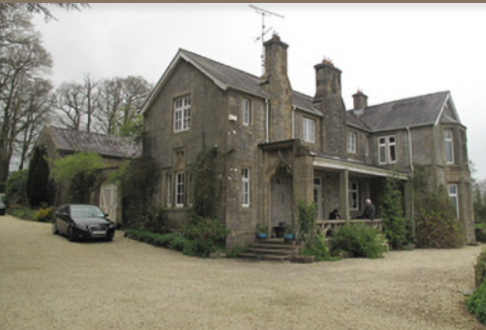
|
| Mullanboy | William Baird was leasing this property from the representatives of Connelly M.L. Leckey at the time of Griffith's Valuation in the 1860s, when it was valued at £30 with a substantial mill complex adjoining. Elements of the mill complex are still extant. | |
| Mullans House | Robert Reynolds was leasing this property from John A. Tredennick at the time of Griffith’s Valuation, when it was valued at £20. It remained extant and occupied until the mid-1940s when it was demolished in advance of the Erne Hydro Electric scheme. | |
| Mullantra | Mullantra was located on the border between counties Cavan and Monaghan and north of the other Pratt homes in the locality. In 1814 it was occupied by James Butler Pratt. Lieutenant Edward Pratt of Mullantra, Kingscourt, petitioned the Lord Lieutenant in 1822 for an appointment to a post in the police establishment (National Archives CSO/RP/1822/1006). By the time of Griffith’s Valuation this building, the property of Colonel Pratt, had a rateable valuation of £2 and was vacant. A new building appears on a nearby site on the 25 inch map and is still extant in the middle of a forestry area. | |
| Mullen | In 1837 Lewis records a house named Mullen as the seat of Lynch Plunkett. The 1749 Census of Elphin records Mullen or Mullin, in the parish of Tibohine, barony of Frenchpark, as the residence of J. Barlow. The house, labelled Mullen, is shown on the 1st edition Ordnance Survey map but does not appear on the later 25-inch edition of the 1890s. | |
| Mullenmore | In 1786, Wilson refers to Mullennore as the seat of Mr. Cormack, "pleasantly situated on the edge of Lough Conn". The townland was in the ownership of the Palmer estate at the time of Griffith's Valuation and there was no substantial house there. | |
| Mullymucks/Fortview | Built post 1838, though the National Inventory of Architectural Heritage suggests it is a modified 18th century house. Occupied by Francis Lyng in the 1850s, when it was valued at £24. It is still extant and now known as Fortview House. |

|
| Mullynahinch House | The National Inventory of Architectural Heritage dates this house circa 1860. Griffith’s Valuation gave a valuation of £12 for the buildings. John C. M’Adams was resident holding the property from Charles Hopes. Bachelor members of the Temple family lived here in the early 20th century. | |
| Mulpit House | Mulpit House is shown on the first edition Ordnance Survey map, published in 1842. At the time of Griffith's Valuation, it was being leased from Francis Bruen by Walter Taylor and was valued at £8 10s. The property included a corn mill though this is noted as "in ruins" on the Ordnance Survey map. Mulpit House is still extant and occupied. |
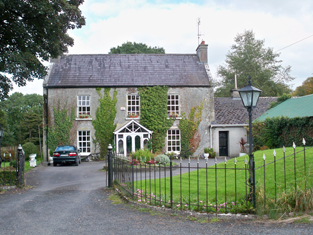
|
| Mulroy House | The National Inventory of Architectural Heritage suggests Mulroy House was built shortly after the publication of Griffiths Valuation in the late 1850s, as there is no substantial house recorded in Rawros townland in the valuation. There is a suggestion that it was primarily intended then as an estate headquarters rather than a country seat. Following the death of the 3rd Earl of Leitrim, it was inherited by the 4th Earl who greatly extended the property. In 1906, it was still in the ownership of the Clements estate and valued at almost £104. It is still extant and occupied. |
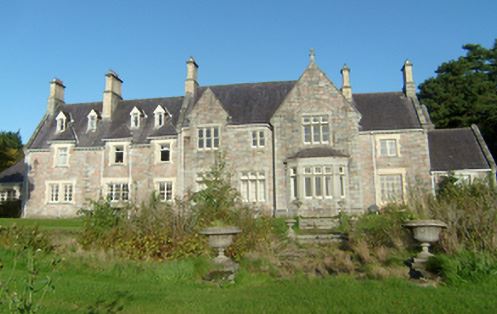
|
| Mulvihill House | Built by the Mulvilhill family, it was their home in the 18th and 19th centuries. Occupied by Daniel Mulvihill in 1814. Charles Mulvihill was a magistrate in county Clare in 1846. By the time of Griffith's Valuation James F. Clarke was leasing the house from Colonel George Wyndham, when it was valued at £14. The house is no longer occupied. | |
| Munakill | John Massy was leasing a house valued at £10, at Munakill, barony of Dromahaire, to Allan Armstrong at the time of Griffith's Valuation. | |
| Munga Lodge | At the time of Griffith's Valuation the townland of Munga was owned by John Geraghty. The Frewens later built a two-storey house at Munga and continued to use the house until the 1930s. It is now a ruin. | |
| Munnilly House | This house is marked on both the first edition 6 inch Ordnance Survey map and the 25 inch map but the building no longer exists. It was the home of the Shegog family. It was situated on the Barrett-Lennard estate and in the mid-19th century was valued at £14 and occupied by William Shegog, born 1824. He was the eldest son of George Shegog, a Justice of the Peace and paymaster of the Fermanagh Militia and Margaret Hamilton. George was the son of John Shegog of Mount Carmel and the family came to Ireland in 1760 from Lubec, Lower Saxony. | |
| Munsborough House | Built post 1838 and occupied by Edward Pearse in the 1850s, when it was valued at £20. Extensive buildings are shown at the site on the 25-inch edition Ordnance Survey map of the 1890s, labelled Munsborough House. A house and large farm are still extant at the site. | |
| munsterhousetest | ||
| Murlough (Raphoe North) | At the time of Griffiths Valuation in the 1850s, James Houston was leasing this property from the Earl of Erne's estate when it was valued at £10. On the 25-inch edition Ordnance Survey map the house on the site is labelled Manse. The National Inventory of Architectural Heritage suggests it was enlarged in the later nineteenth century, possibly when it came into use as the manse. It is still extant and occupied. |
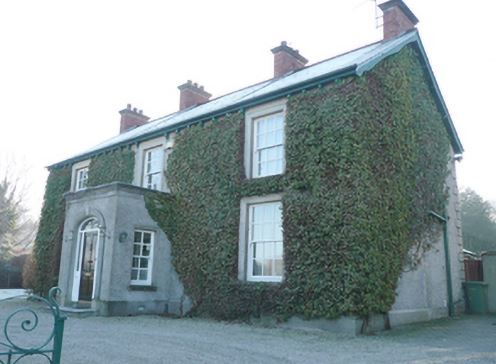
|
| Murrisk Lodge | Murrisk Lodge was held in fee by John C. Garvey at the time of Griffith's Valuation, when it was valued at £20. The principal home of the Garvey family, it was sold in the 1960s to James Fair. In 2007 the old building was demolished and a new hotel was being developed. |
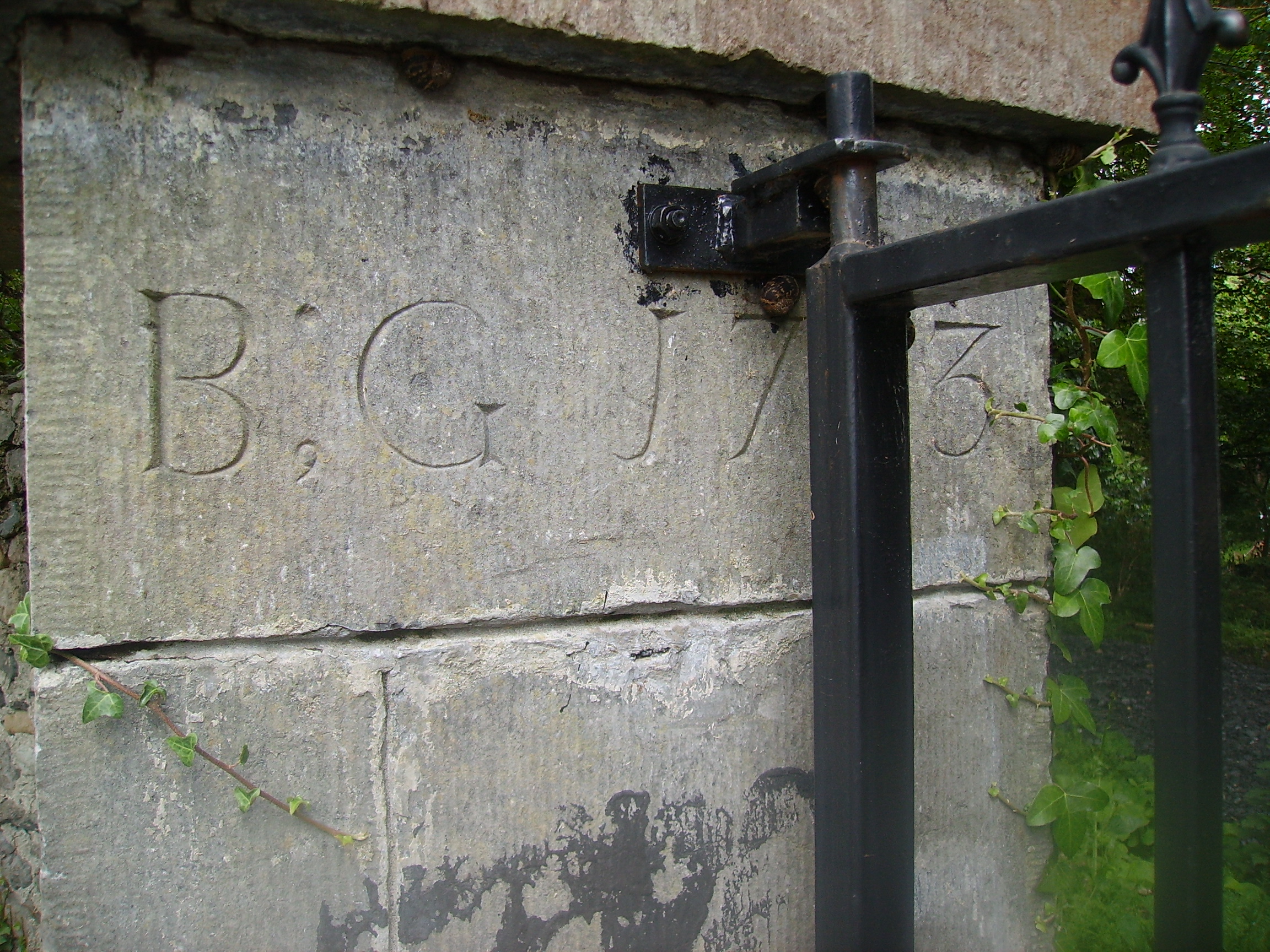
|
| Murroogh House | Part of the Blake estate at Merlin Park. Built by James Henry Ryan in the 1860s who spent nearly £5,000 on the property and occupied in the 1880s by the Bishop of Galway. Owned by the newspaper magnate William Randolph Hearst in the 1930s and bought by the Galway Mayo Institute of Technology in 2003. |
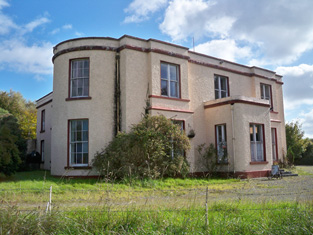
|
| Murvagh House | Reverend John Kincaid held this property in fee at the time of Griffiths Valuation in the 1850s, when it was valued at £25. It is labelled Glebe House on the 1st edition Ordnance Survey map but as Murvagh House on the 25-inch map of the early twentieth century. It is still extant. |

|
| Myross Cottage | At the time of Griffith's Valuation, Edward Powell was leasing this property to Rev. Robert Oliver, when it was valued at £15. The National Inventory of Architectural Heritage suggests it is of eighteenth century date. It is still extant and well maintained. |
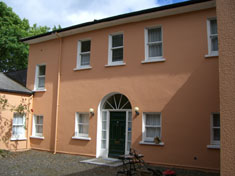
|
| Myross Wood | John Townsend held this property in fee at the time of Griffith's Valuation, when it was valued at £45. Eugene Daly writes that the house was built by the Reverend Arthur Herbert, Vicar of Myross, who married Helena Townsend of Castletownsend. In the late 18th century the house was bought by the Earl of Kingston who enlarged it and lived in it while Mitchelstown Castle was being built. It reverted back to Townshend ownership in 1826 when purchased by John Sealy Townsend and remained in Townsend ownership until 1943. In 1944 the house was bought by the Cleary family. Sold to the Missionaries of the Sacred Heart in 1946, who now use the building as a Retreat Centre. |

|
| Myrtle Grove | Myrtle Grove, a Tudor manor house, associated with Sir Walter Raleigh and the sixteenth-century poet, Edmund Spencer At the beginning of the 17th century it was sold to Richard Boyle, 1st Earl of Cork, and later became the property of the Hayman family, who owned it in the 18th and early 19th centuries. In 1837 Lewis writes that it was inhabited by Colonel Faunt. Later occupants include Joseph Wakefield Pim, Sir John Pope Hennessy and the Arbuthnot family. Now in private hands this house is open to the public on certain days in the year. |
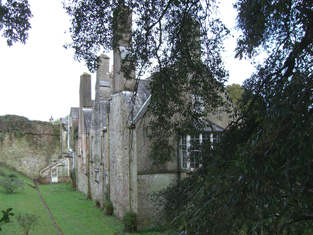
|
| Myrtle Hill | Richard Barter was leasing this house to Denis Ahern at the time of Griffith's Valuation, when it was valued at £12. Myrtlehill Farm is still extant at the site. | |
| Myrtleville Cottage | Ó Murchadha states that Myrtleville Cottage was built by Sir Nicholas Trant in the early nineteenth century and was later sold by him to Joseph Cummins. At the time of Griffith's Valuation, this property was unoccupied but owned by several parties including Cummins as well as the Daunt and Puxley estates. It was then valued at £11. It is still extant and has sometimes operated as a bar and restaurant. |

|
| Myrtleville House | Lewis refers to Myrtleville House as the seat of Dr. Shea. This was Dr William Augustine Shea or O'Shea, brother of Luke Shea of Gortigrenane. By 1850 it was being leased by James Fegan from the Puxley estate among others and was valued at £25. Ó Murchadha notes that it had earlier been owned by the Trant family and had a suceession of owners since including several periods of occupation by members of the Daunt family. It is still extant. |

|
| Nadrid | A house occupied at the beginning of the 19th century by Joseph Woodley, who married Anne Baldwin in 1799 but died a few years later. By 1814 Samuel Galway was residing at Nadrid. In 1837 Henry O'Callaghan was the occupier and he was still resident at the time of Griffith's Valuation. He held the house valued at £42 from the representatives of Abraham Cross. The Irish Tourist Association survey of the 1940s refers to Nadrid as the residence of Captain Matthews. A house still remains at the site. |

|
| Nadrid | Daniel Connor held a house in the townland of Nadrid valued at £31+ from the representatives of Abraham Cross. This may be the house known as Riversdale marked on the first Ordnance Map. In 1894 Slater refers to Nadrid House as the residence of William O'Sullivan Galgey. A house still exists at the site. | |
| Nahillah House | Nahillah House was built in the mid-19th century for the Jones family. Griffith’s Valuation records the buildings valued at £16 and held by the representatives of John C. Jones in fee. Home of David Fielding Jones in 1862 (Thom’s Directory), the house became the home of the Cole family in the 20th century and is still extant. | |
| Nantinan House | Bence Jones writes that this was a mid 19th century house of the villa type. The original Nantenan was the residence of Major Wilson in 1814. In 1786 Wilson refers to it as the seat of Mr. Royse. It was renovated by Thomas H. Royse in the 1830s. The Ordnance Survey Name Book [circa 1840] states that the house was built about 100 years previously and that the family arms were cut over the hall door. Lewis writes of ''the very interesting improvements'' which ''have been made at great expense'' by T. H. Royse. This Royse residence was valued at £30 at the time of Griffith's Valuation and was held by Thomas Royse in fee. Advertised for sale in 1853 the house and 145 acres were purchased by John White for £3,800. He demolished the old house and built a new one in the late 1850s, which was still in the possession of the White family in the 20th century. In 1906 this house was valued at £48. In 1944 the author Dorothea Conyers is recorded as the owner (ITA). |

|
| Nashville/Rosnalee | This house was originally known as Nashville and was the home of the family of that name in the 18th century. Wilson refers to it as Nashville, the seat of Mr. Nash, in 1786. It passed by marriage to the Leader family. Nicholas P. Leader occupied the house in 1814. It was still known as Nashville in 1837 but is marked on the first Ordnance Survey map as Rosnalee. Valued at £51 at the time of Griffith's Valuation it was held by William Leader in fee and he had a flour mill nearby valued at £45. The Leaders still occupied this house in 1921. In 1943 the Irish Tourist Association Survey noted it as having been the chief seat of the Leaders, a two-storey spacious structure which was then unoccupied. It is no longer extant. | |
| Nazareth House | The house now known as Nazareth House was originally built in 1805 by members of the Pollexfen family. |

|
| Neddans | In 1840 the Ordnance Survey Name Books note "Neddins" as the residence of Mr. Mulcahy, "a very neat house in excellent repair". At the time of Griffith's Valuation Francis Mulcahy occupied a house at Neddans valued at £21 and held from the Earl of Glengall. A farming enterprise is still located at this site. | |
| Neptune Vale | O'Connell states that Neptune Vale was the original de Basterot house in the Kinvara area, probably built in the late 18th century. The house was demolished sometime in the mid-19th century although at the time of Griffith's Valuation, it was still owned by Count de Basterot and valued at £4. One of the outbuildings was possibly subsequently converted into a dwelling house. | |
| Netley House | The home of Henry William Knox, fourth son of Francis Knox of Rappa, occupied by Richard Burke at the time of Griffith's Valuation when the house was valued at £30.. The house is now a ruin. |

|
| Netterville Lodge | A two storey 19th century house, the home of the Nettervilles and the Gerrards. Came into the possession of the Fallon family of Runnimeade, county Roscommon, following the death of Marcella Gerrard in 1865. Occupied by Cecilia Fallon in 1906, later demolished. Both Taylor and Skinner and Wilson indicate a second Fallon property, Highlake, in the area in the 1780s. |

|
| Nettleville | The home of the Nettles family in the 19th century, valued at £35 in the 1850s. Occupied by the Reverend Basil Orpin in 1814. This house was still in Nettles occupation in 1906 but is now a ruin. |

|
| New Abbey | In 1786 Wilson refers to New-Abbey as the seat of Moore Cootee. He notes that the house was close to "the great flour mills built by the late Stephen Moore". New-Abbey was occupied by Henry Moore in the mid 19th century and held from Stephen Moore, the buildings were valued at £11.16 shillings. | |
| New Court | At the time of Griffith's Valuation, Lionel Fleming held this property in fee, when it was valued at £22. Both Lewis, in 1837, and Leet in 1814, noted it as the seat of Beecher Fleming. It is shown on Taylor and Skinner's 1783 map apparently the residence of a Tonson family and Wilson refers to it as a seat of Lord Riversdale in 1786. It was owned by the representatives of Beecher Fleming in 1906 when it was valued at £28 5s. In the early 1940s the Irish Tourist Association survey mentions that it was occupied by a Trinder family. Bence-Jones notes that this house is now demolished though a farm exists at the site. | |
| New Grove | Leet and Lewis both record Westropp Smith as the occupier of New Grove, Roscrea, in 1814 and 1837. John Minchin was the occupier at the time of Griffith's Valuation. He held the property, valued at £19, from Henry B. Minchin. A building is still extant at this site. | |
| New Grove | Marked on the first edition Ordnance Survey map as New Grove, this house appears on the 25-inch map of the 1890s and is still known by the name, St Kierans. Occupied by J. W. Bayly in 1837 and described by the Ordnance Survey Name Books as " a good dwelling house, the residence of John Bayly" in 1840. It was occupied by Thomas Fetherston at the time of Griffith's Valuation and held from John Bailey. The buildings were valued at £19+. This property was advertised for sale in November 1851, the estate of John Washington Bayly. |

|
| New Grove House | New Grove House and mill with a rateable valuation of £70 were in the possession of Charles Murphy in the 1850s. He held the property from Richard Coote of Bellamont Forest. A building still exists at this site but the mill is now a ruin. | |
| New Park | A house named on the 1st edition 6 inch Ordnance Survey Map (1836), it was occupied by Dacre Hamilton in the 1830s. Home of Thomas Atkinson in the 1850s, valued at £10 and held from Mary Elizabeth and Charlotte O’Brien. Home of the Carleton family in the early 20th century. | |
| New Park | A mid 18th century house built by the Pennefather family and occupied by them until sold to the Davies family after the Famine (Bence Jones). In the mid 19th century the house was valued at almost £49 and held in fee by Captain M. Pennefather. It was advertised for sale by the Pennefathers in June 1852 and bought by the Davies who sold it to the McCans in 1864. Joseph McCann was resident in 1906. Now known as Ballyowen House and still in use as a country house. |
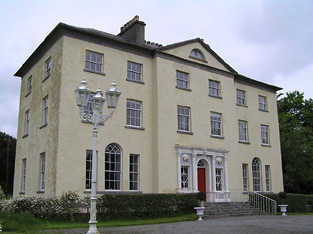
|
| New Park | A Lyster home from the early 18th century, inherited by the Smyths of Barbaville through marriage. Held in fee and valued at £38 at the time of Griffith's Valuation. The home of Marcus Anthony Levinge in 1906. The house remained in Levinge hands until about the 1940s when the roof was removed. In the early 1970s the house was restored as a hotel by Paddy Kenny. |

|
| New Ross | In 1786 Wilson writes that New Ross was the seat of Mr. White. The property is labelled "site of New Ross House" on the first edition Ordnance Survey map of the 1830s. The Ordnance Survey Name Books record that "the site of this old house is all that can be found at present .....It was once a place of some account being the residence of Bishop Buscow and afterwards of the White family ...they lived here til about 1790". This townland was in the possession of Bolton Waller at the time of Griffith's Valuation. | |
| Newberry House | This house was another Newman residence located in the parish of Kilshannig. In 1786 Wilson refers to Newberry as the residence of Colonel Newman, possibly the same man who was murdered in the house by his groom and an accomplice in 1816. John Newman held the property from Adam Newman at the time of Griffith's Valuation. The buildings were valued at £18.10 shillings. Post Griffith's Valuation the house became the home of the Swanzy family and it was they who built the present house incorporating the original one. The house was sold to the Footts in the 20th century. Also known as Kilshannig House. |
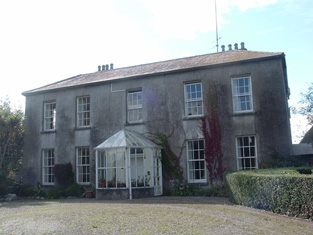
|
| Newberry Manor | This house was the seat of the Newman family in the 18th and 19th centuries. In 1786 Wilson refers to it as "Dromore, the seat of Mr. Newman". The house was valued at almost £49 in the mid 19th century and held by Adam Newman in fee. John R.B. Newman was resident in 1906. The house was burnt in June 1921 during the War of Independence when it was owned by John R. Pretyman Newman. It was rebuilt by the Newmans and then sold to the Poor Sisters of Nazareth as a nursing home. |
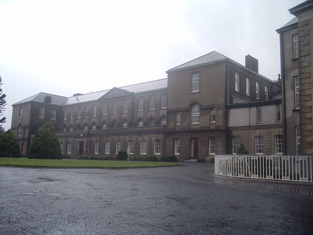
|
| Newbliss | This house, now demolished, on the outskirts of the town of Newbliss was the home of the Ker family who held it in fee. Built in 1814, Andre A. M. Ker was the proprietor in the mid-19th century when the buildings were valued at £70. Mary Isabella Murray Ker was the occupant in the early 20th century with over 200 acres of untenanted land. | |
| Newborough | Newborough was being leased by George A. Daunt from William Drew at the time of Griffith's Valuation, when it was valued at £40. It is also referred to as his seat by Lewis in 1837. It was in a ruinous condition for many years but is currently undergoing restoration. | |
| Newborough | A house on the Dunraven estate occupied by the Reverend J. Croker in 1814 and by members of the Wilson family in 1837 and the 1850s when the buildings were valued at £40. |

|
| Newborough | Occupied by Lynch esq in the 1770s, this house passed to the Crean family by marriage. Newborough became a Blake house in the early 19th century. At the time of Griffith's Valuation there were two houses valued at £3 in the townland of Bunagarraun, occupied by Patrick Higgins and Margaret Higgins, who held from Patrick Crean Lynch. The original house is not extant. |
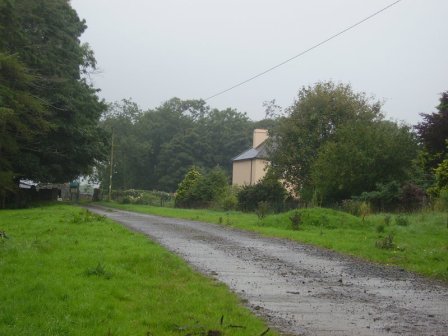
|
| Newborough (Castlereagh) | Mrs. Alicia Dowling offered almost 300 acres of her estate for sale in the Landed Estates' Court in 1860, including Newborough House which she occupied. This was held on an 1833 lease from Walter Blake Dowling. | |
| Newbrook | In 1786 Wilson mentions Newbrook, the "elegant and delightful seat" of Henry Bingham. This house burnt down in 1837 and was not rebuilt. Only a small amount of the walls of the house remain but the yard buildings are still in use. |

|
| Newbrook | At the time of Griffith's Valuation Michael Costello was leasing Newbrook, valued at £7 from the Keon family. Lewis records Newbrook as a residence of the Keon family in 1837. in 1814 Ferdinand Keon had his address at Newbrook, Carrick-on-Shannon. The sale notice of 1878 mentions the existence of Newbrook House which "with some expenditure might be made a most desirable residence for a gentleman's family". | |
| Newcastle | In 1786 Wilson refers to Newcastle as the seat of Thomas Browne. In the nineteenth century a Persse residence close to their distillery at Nun's Island and their milling operations. Newcastle House was the home of Henry Stratford Persse in the early 19th century. It was later acquired by University College, Galway but was demolished in the early 1970s to make way for new buildings. | |
| Newcastle | Newcastle was the home of Andrew Clarke O'Malley, son of George O'Malley of Spencer Park. Following the death of Andrew's son, Owen Bingham Manners O'Malley, in 1886, Newcastle became the property of his sister, Elizabeth Brewster. Count Manus O'Donel, a Major General in the Austrian Service, lived at Newcastle in the late 18th century. In 1786 Wilson refers to it as the seat of General O'Donnell. Occupied by David Ruttledge in 1814 and by Jacob Beckett at the beginning of the 20th century. Only a portion of the original building is now extant. |

|
| Newcastle | The original Fitzgerald castle was granted to the Courtenay family in 1591. The Castle was occupied by David Mahony and his son, Pierce Mahony, in the mid 18th century. Bence Jones writes that the residence of the Earls of Devon in county Limerick was a house of nine bays in the castle precincts. It was held by them in fee and valued at £55 at the time of Griffith's Valuation. This house was occupied by the agent to the Devon estate. Slater describes it as Courtenay Castle in 1894 when it was occupied by Charles Curling. In 1910 it was bought by the Curling family who had been agents and was burnt in 1922. The Castle remained in the possession of the Curlings until the 1940s. |

|
| Newcastle | The buildings at Newcastle were valued at £18 in the early 1850s, occupied by Daniel Donohoe and held from Francis Wyse. | |
| Newcastle | Lewis writes that the only seat in the parish was the residence of S. Mulcahy. The Ordnance Survey Name Books, in 1840, mention that Newcastle House was then "in very bad repair". In the mid 19th century Miss Anne Mulcahy held the house valued at £12 from John Gordon, medical doctor, who held from the Perrys. In the 1870s William Perry is described as "of Newcastle". Elizabeth Perry occupied this house valued at £22+ in 1906. It is no longer extant. | |
| Newcastle (Clontuskert) | Taylor & Skinner record Newcastle House as a residence of the Davis family in 1783. | |
| Newcastle (Kilconnell) | In 1786 Wilson refers to Newcastle as the seat of Mr. Davis. This townland was partly owned by the Longworths of Oatfield by the time of Griffith's Valuation. | |
| Newcomen Castle | Newcomen residence in the 18th century. It is shown on the 1st edition Ordnance Survey map but only the site of the castle is recorded on the later 25-inch map of the 1890s. | |
| Newfield House, | Part of the McLoughlin estate and in the second half of the 19th century of the Smith estate. The house appears to have been a ruin by the end of the 19th century. A ruined building is situated near the sea shore with some farm buildings still in use. |

|
| Newford | In 1786, Wilson mentions Newford as the seat of Edward Browne. In 1814 Thomas Tighe is recorded as residing at Newford. Patrick Fitzpatrick of Newford House, Athenry is listed as a subscriber to ''Lewis' Topographical Dictionary'' (1837). The house was later part of the Whaley and Perry estates in the 1850s and was offered for sale in the Encumbered Estates court in 1852. Portion of Newford later bacame incorporated into Mellows Agricultural College farm. The house is no longer extant. |

